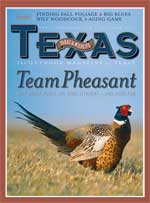
Devil’s River State Natural Area
What it lacks in modern comforts is more than made up for in unspoiled natural beauty.
At Devil’s River State Natural Area in Val Verde County, tenderfoots need not apply. Don’t expect the usual amenities Texans have come to expect at most state parks. And, if you’re coming to the state natural area, leave firewood, charcoal and Fido at home. Do, however, bring drinking water — lots of it — sturdy walking boots, sunscreen and a hat, because it’s hot much of the year in this semi-desert environment.
But what the natural area lacks in facilities and modern comforts, it makes up for in unparalleled quiet, breathtaking sunsets, abundant and diverse wildlife, near-pristine beauty and an unspoiled river whose waters are considered to be the purest water of any Texas river. Even so, only approximately 1,500 adventurers visit Devil’s River SNA each year.
All park visitors are required to make advance reservations through the Texas State Parks Central Reservations Center (512-389-8900) before heading to Devil’s River because of limited staff and minimal facilities. Overnight accommodations consist of seven primitive campsites with no potable water and a sparsely furnished bunkhouse with five rooms with two single bunk beds per room and two restrooms with showers.
“If someone wants to do a river trip,” explains Bill Armstrong, who’s managed the park since it opened in 1988, “we’ll shuttle them from headquarters down to the river. Visitors contract with a canoe outfitter to bring them back to the park.”
At the put-in point inside the park, Devil’s River is uncharacteristically wide and calm. During my late-February visit, I found the river a placid, shimmering sliver of turquoise waters snaking through the mist-shrouded hills and limestone cliffs rising more than 100 feet on this jagged edge of the Edwards Plateau. Only the barely discernible rumble of Dolan Falls less than a mile downriver on Texas Nature Conservancy land served as a clue to the Devil’s more tumultuous nature.
Armstrong rates the river’s level of canoeing difficulty as “moderate,” with mostly Class 1 and 2 rapids, but says its twisting, rocky channels can play havoc with novice river runners. A canoe livery about 10 miles downriver from the park serves as the main takeout point for most canoeists, who generally take from six to eight hours to paddle the distance.
While the river’s smallmouth and largemouth bass are the main draw for most visitors, the park’s multifaceted ecology, too, attracts considerable interest among birders and other outdoor enthusiasts. The natural area abounds with numerous bird, plant and animal species. Within a matter of minutes, hikers can pass from verdant woodlands of oaks, herbs, ferns and sweet-smelling mountain laurels reaching 20 feet into the air into a desertscape of thorny scrub and cacti. The vegetative mix provides diverse habitat for such critters as wild turkey, beavers, bobcats, badgers, horned toads and gray fox. Axis deer, black buck antelope and aoudad sheep are holdovers from the area’s former life as an exotic game ranch.
— Rob McCorkle
The park is located in Val Verde County about 45 miles northwest of Del Rio. For more information about Devil’s River SNA, call (830) 395-2133, or visit <www.tpwd.state.tx.us/spdest/findadest/parks/devils_river>.

